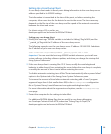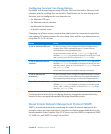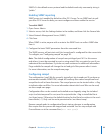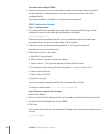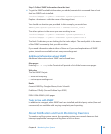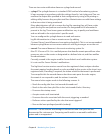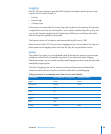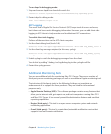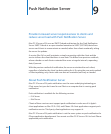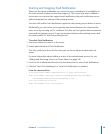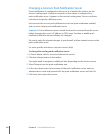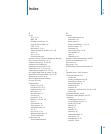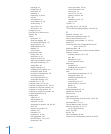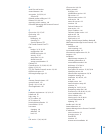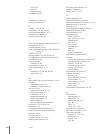
Chapter 8 Monitoring Your System 187
To run slapd in debugging mode:
1 Stop and remove slapd from launchd’s watch list:
launchctl unload /System/Library/LaunchDaemons/org.openldap.plist
2 Restart slapd in debug mode:
sudo /usr/libexec/slapd -d 99
AFP Logging
The server side of Apple File Service Protocol (AFP) keeps track of access and errors,
but it does not have much debugging information. However, you can add client-side
logging to AFP clients to help monitor and troubleshoot AFP connections.
To enable client-side logging:
Perform all these actions on the AFP client computer.
1 Set the client debug level (levels 0-8):
defaults write com.apple.AppleShareClientCore -dict-add afp_debug_level 4
2 Set the client log message recipient (in this case, syslog):
defaults write com.apple.AppleShareClientCore -dict-add afp_debug_syslog
1
3 Enable syslog to catch the debugging messages from the client.
You do this by adding *.debug /var/log/debug.log to the syslogd.conf le.
4 Restart the syslog process.
Additional Monitoring Aids
You can use additional aids for monitoring Mac OS X Server. There are a number of
third-party server monitoring packages, as well as an additional Apple monitoring tool.
The inclusion of third-party tools in the following list does not constitute an
endorsement of or support for these products. They are listed for informational
purposes only.
 Apple Remote Desktop (ARD): This software package contains many features that
allow you to interact with, get reports on, and track computers running Mac OS X
and Mac OS X Server. It has several powerful administration features and excellent
reporting capabilities.
 Nagios (third-party): This tool is an open source computer system and network
monitoring application.
 Growl (third-party): This tool is a centralized, extensible notication service that
supports local and remote notication.



